Body Alignment: What does perfect posture look like?
Contents
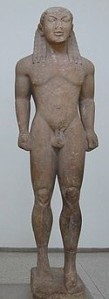 Body alignment refers to the position of our joints relative to each other. Simply put, its the way our body parts are stacked! Checking static standing posture is a way of assessing the body when in a semi resting state. I have written this article to provide an idea of what perfect posture looks like. This article is not however, a guide showing you how to assess yourself as this is pretty tricky to do yourself (more on this at the bottom of the page). It will highlight some of the key things to look for and provide some pictures to help illustrate some of the body’s landmarks.
Body alignment refers to the position of our joints relative to each other. Simply put, its the way our body parts are stacked! Checking static standing posture is a way of assessing the body when in a semi resting state. I have written this article to provide an idea of what perfect posture looks like. This article is not however, a guide showing you how to assess yourself as this is pretty tricky to do yourself (more on this at the bottom of the page). It will highlight some of the key things to look for and provide some pictures to help illustrate some of the body’s landmarks.
Human beings are designed to move. When it comes to health and performance it’s movement that matters. Checking static body alignment is important as the position of our joints often dictates where a movement begins and ends. This in turn effects how efficient and safe that movement is.
Checking static alignment is the starting point I use when I am assessing someone. It doesn’t reveal everything, it just provides an overall snapshot I can use before getting more specific.
Body alignment anterior view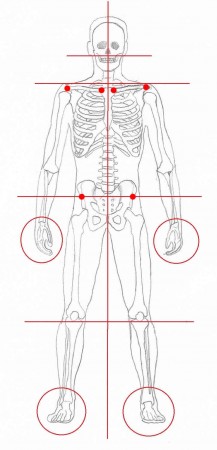
Ear height. Notwithstanding large piercings, both ear lobes should be at the same height.
Both shoulders should be the same height. Also, the collar bone (clavicle) should running slightly downhill towards the chest.
The central line separates the body into right and left halves. Starting at an equal distance between the feet, the line should pass through centre of the pelvis, centre of the chest and the nose.
The ASIS’s (anterior superior iliac spine’s) are two bony points at the front of the pelvis. Both of these should be the same height and neither should be further forward than the other.
The thumbs should be facing forwards (you shouldn’t be looking at the backs of the hands).
Feet should be pointing straight ahead with a visible arch under the sole of the foot.
Body alignment posterior view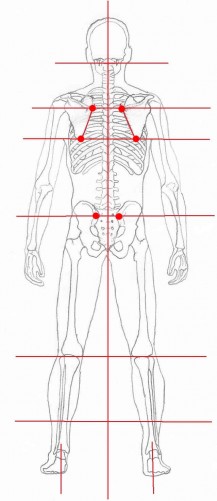
Again, ears should be the same height as each other.
The centre line should start at an equal distance between the feet. The line should pass through the centre of the buttocks, continue centrally up the spine and head.
This next one is a bit more complicated. Find the medial border of both scapula spines. Usually this is the highest bony prominence that you can feel one the inside edge of the shoulder blades. (See the top of the red lines drawn on the inside edges of the shoulder blades in the picture).
Both these points should be the same height as each other and the same height as T2 (the 2nd Thoracic vertibre down). Both of these points should also be around 3 inches from the centre line. These points should always be closer to the spine than the bottom of the shoulder blades.
The bottoms of the shoulder blades should be the same height (at around T&) and the same distance from the centre line as each other.
The posterior superior iliac spines (PSIS) are two bony prominences at the back of the pelvis. These should be the same height and neither should be further forward than the other.
The folds at the back of the knees should be at the same height.
Ideally the Achilles tendons should be pretty close to vertical and not bow-stringing.
Body alignment side view
Note: It’s very important that this is checked from both sides. Left and right.
The central line starts just in front of the ankle. The line then passes through the greater Trochanter (a bony prominence at the top of the upper leg bone). This point can usually be felt with the fingers on most people. It can sometimes be tricky to find if someone is very overweight.
The line continues upwards passing through the acromion process (a bony point just above the top of the upper arm bone) and then through the ear.
Assessing the tilt of the pelvis can be tricky. The ASIS should be directly above the pubis synthesis (marked by the small line in the picture). In the real world this can be difficult to assess without a specific tool.
An alternative (if slightly less accurate) way of assessing pelvic tilt is to compare the heights of the ASIS & PSIS (see below).
The ASIS & PSIS should be around the  same height as each other on each side of the body. It’s not uncommon, to have a cm or so difference in ASIS to PSIS height. What’s particularly important, is that both sides (right & left) are the same. Therefore, it’s always worth checking the view from both sides.
same height as each other on each side of the body. It’s not uncommon, to have a cm or so difference in ASIS to PSIS height. What’s particularly important, is that both sides (right & left) are the same. Therefore, it’s always worth checking the view from both sides.
Anatomical variations
Very few of us have perfect posture and it’s rare that I have someone walk in to my gym who has perfect alignment. Most of the problems I see, have been caused by the persons life style or bad habits (sitting slouched / leg crossing etc). Sometimes, a person may have suffered an accident at some point in their lives which has effected their joint alignnment. Very occasionally though, I come across a problem that a person has been born with.
Leg length discrepancies are actually quite common. At present I am working with four people who have discrepancies of 1cm (0.39″) or more. As I am sure you can imagine, this has a huge effect on posture. If one leg is shorter, the pelvis, spine, shoulders and head will most likely be out of alignment. A leg length discrepancy can even effect the knees, ankle joints and arches of the feet.
There are many anatomical variations that can effect our posture. Conditions such as; Tibial torsion, Femoral retroversion/anteversion and congenital scoliosis are just a few of the variations I see. Although these conditions are pretty rare, they do occur and have a real knock on effect on joint alignment and movement.
Most people are unaware that they have these conditions. Some of these problems can be identified through touch and assessment. On occasion, an X-ray may be required. It’s important to identify these problems. There is very little point in someone shooting for perfect posture if their skeleton differs from the norm. In addition to their effect on joint alignment, anatomical variations can also have an effect on range of motion. Trying to squat below parallel with good form will be impossible if you have a particularly deep hip socket (see picture above).
What next?
As mentioned above, this article is not a guide showing how to assess your own posture. There seems to be hundreds or articles on the net with titles such as ‘How to assess and correct your own posture’. Unfortunately, achieving perfect posture it’s not as easy as just standing up straight or doing a few exercises. There is a hell of a lot more to it than that.
The same can be said for assessing your own body, it’s pretty dam tricky to do yourself. Not only is it impossible to properly view yourself from the back or the side. It often takes an expert eye to spot problems. Before I am inundated with pictures and requests, I don’t assess peoples posture via pictures only. I believe in getting hands on so that I can feel what’s going on. If you are worried about your posture then I recommend going to see a Therapist or a trainer who offers this service.
Having said all that, I may write a guide to assessing your own posture soon. It won’t be any substitute for getting your posture assessed professionally, it should however help you to identify some of the more obvious problems. When it is written, I will I provide a link to it here.
In the meantime, you can read more about the most common posture problems I see by following this link.
Thanks for reading,
As always, if you feel this could help someone you know please link to it or share it.
Thanks to Paul Grilley www.paulgrilley.com and Joe Dully photographer for the use of the images used as examples of ‘Anatomical Variations’.
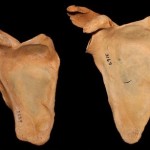
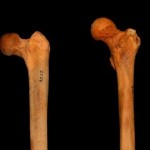
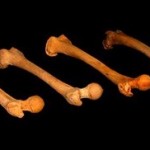
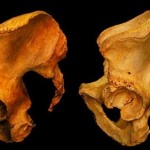
I would like to know about body alignment and postures
I would suggest that the line right through the cenre of the ear to the shoulder is not functional. If you want examples of excellent posture you can easily find this in a photo of F.Mathias Alexander. There is a forward orientation from the upper thoracic and the sterum is aligned vertically, not pushed up which will happen with an attempt to put the ear over the shoulder.
You will also find this same alignment in excellent movers such as Roger Federer or Fred Astaire if you can find an image of them just standing or walking. It is in fact this excellent alignment from which they are able to do the remarkable things they do on the tennis court or dance floor.
Great, clear and coherent explanation conveyed in layman’s terms for us all to comrehend.
You have pointed out a few additional factors compared to millions of other articles i have read when considering alignment. In particular, the shoulder bones at front of body dipping slightly toward centre line. As well as pointing out that the top of shoulder blades at back of body should be closer and the bottom of the blades wider apart.
Just one question for you that i have grappled with in the last 5 years since my movement/walking has become lop sided..
Does weight transmit downward to big toe in walking or does big toe landing transmit force upward?